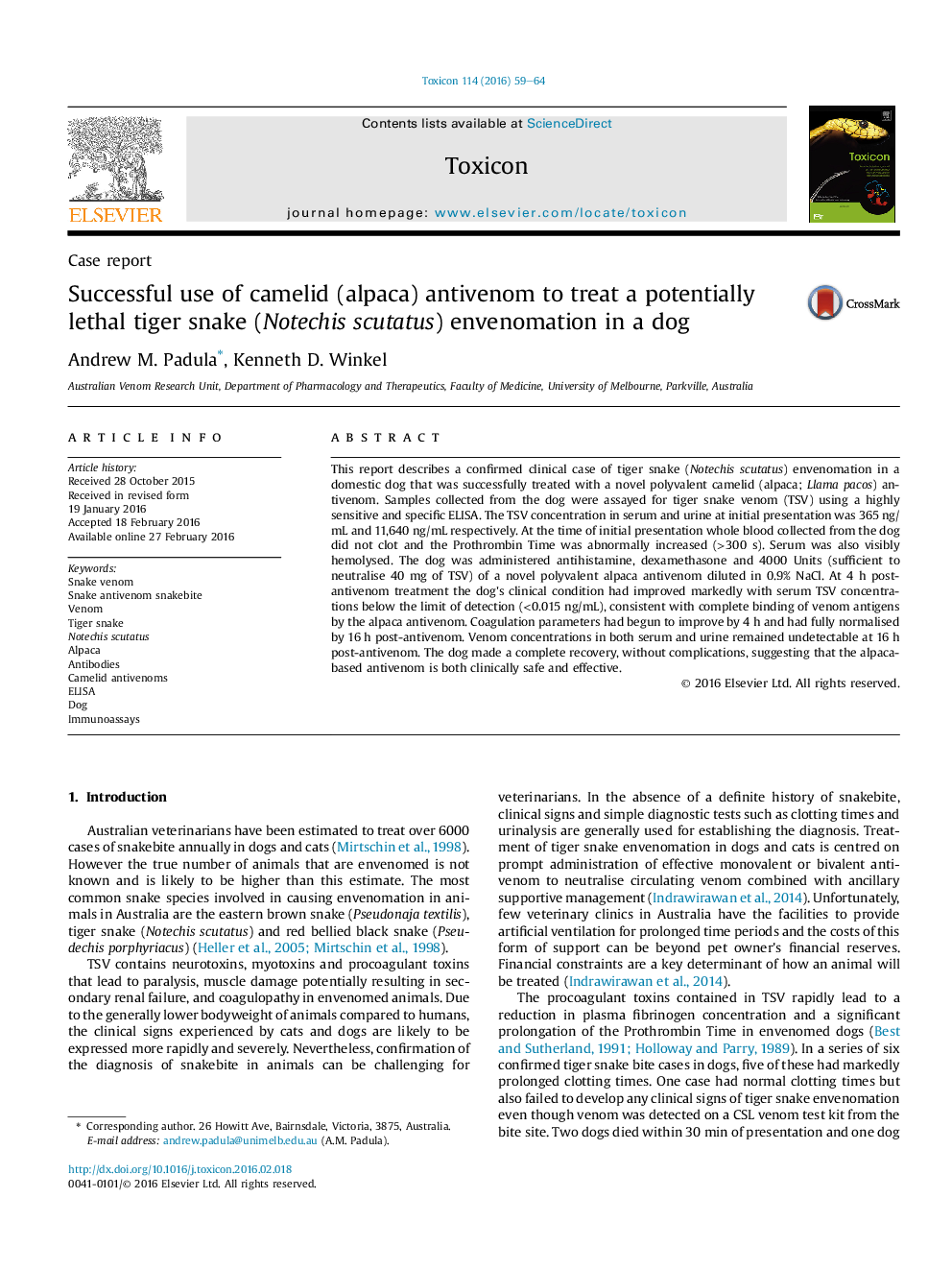| Article ID | Journal | Published Year | Pages | File Type |
|---|---|---|---|---|
| 2064075 | Toxicon | 2016 | 6 Pages |
•Successful treatment of a dog envenomed by a tiger snake (Notechis scutatus).•Treated with a novel polyvalent camelid (alpaca) antivenom.•Venom concentrations assayed in urine and serum by ELISA.•Camelid anti-tiger snake venom capture antibodies in ELISA.•No adverse effects and prompt recovery of the envenomed dog.
This report describes a confirmed clinical case of tiger snake (Notechis scutatus) envenomation in a domestic dog that was successfully treated with a novel polyvalent camelid (alpaca; Llama pacos) antivenom. Samples collected from the dog were assayed for tiger snake venom (TSV) using a highly sensitive and specific ELISA. The TSV concentration in serum and urine at initial presentation was 365 ng/mL and 11,640 ng/mL respectively. At the time of initial presentation whole blood collected from the dog did not clot and the Prothrombin Time was abnormally increased (>300 s). Serum was also visibly hemolysed. The dog was administered antihistamine, dexamethasone and 4000 Units (sufficient to neutralise 40 mg of TSV) of a novel polyvalent alpaca antivenom diluted in 0.9% NaCl. At 4 h post-antivenom treatment the dog's clinical condition had improved markedly with serum TSV concentrations below the limit of detection (<0.015 ng/mL), consistent with complete binding of venom antigens by the alpaca antivenom. Coagulation parameters had begun to improve by 4 h and had fully normalised by 16 h post-antivenom. Venom concentrations in both serum and urine remained undetectable at 16 h post-antivenom. The dog made a complete recovery, without complications, suggesting that the alpaca-based antivenom is both clinically safe and effective.
